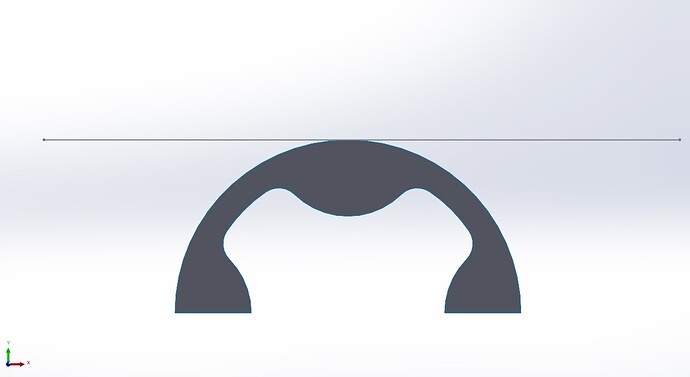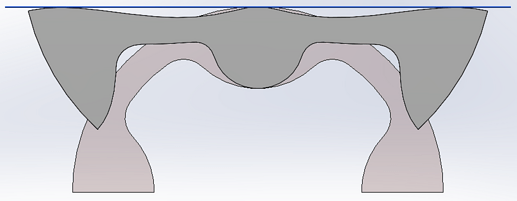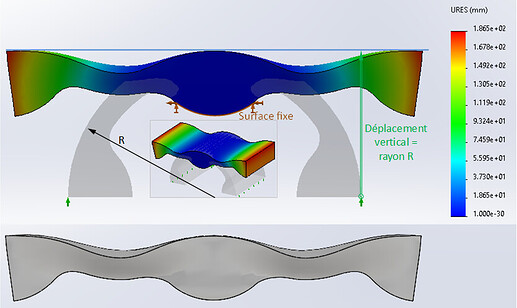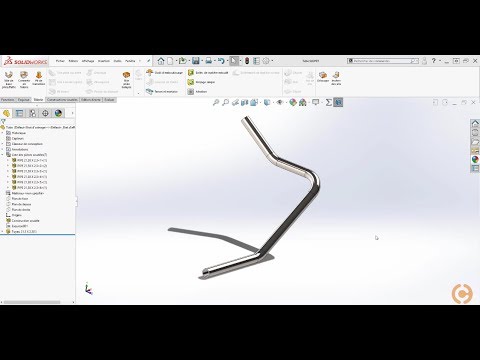Hello
I'm looking to unfold the piece on the image following the sketch line.
What functions should I use to achieve this?
Hello J.Clavey,
Given the shape of your part, it will never unfold, for me it is a machined part.
Otherwise we need more information on this part supposedly made of sheet metal...???
@+.
AR.
It is a piece of foam, cut in a water jet in this shape. The idea would be to "flatten" it to save material in the nesting. As it is foam, it can be restored to its folded shape once it is in place.
Hello
See with this method: SOLIDWORKS Sheet Metal - Another way to Create Flat Patterns (javelin-tech.com)
bjr,
You may have the opposite problem after cutting.
Once cut you will have a flat piece that you will have to constrain to have a rounded shape.
May the force be with you
Depending on the size of your foam, it's not the material + or less that will really cost but the labor (price of the cut).
Not really sure that the unfolded is more economical, for an uncertain result will the folded foam piece have the right ribs? (depending on the behavior of the foam when it is forced into position)
Hello
One possible approach is to use the body deformation function: Insert, Functions, Bending menus.
By playing with the parameters of the function, it is possible to bring the outer cylindrical shape closer to a flat surface. The sections before and after deformation are almost identical, but there is no guarantee that the future " bending " will restore the original shape.
Mousse.SLDPRT (268.4 KB) in SW 2021 version
Another, more " scientific " approach: use the EF simulation module of SolidWorks, in static, with large displacements.
The principle consists of fixing the lower cylindrical part of the top of the " vault ", and forcing the outer edges of the " legs " to rise, to bring them into the upper horizontal plane serving as a target.
In the absence of a foam-type material, the simulation below was made with rubber.
Once the deformation has been calculated, it is possible to convert it into a volume body of SW...
The result is more convincing than that of the " geometric bending" function: if the material is elastic, the reverse deformation from the new body should restore approximately the original shape.
Kind regards.
MousseEF.SLDPRT (742.3 KB)
Hello
Although the @m.blt solution is very nice, I think the best thing to do is to keep a constant thickness by adding cutouts. If the foam is just used as a cushion, it shouldn't be too much of a problem. Having a constant thickness should limit the deformation concerns of the ' thick ' areas in the m.blt solution.
Red cuts in the final position:
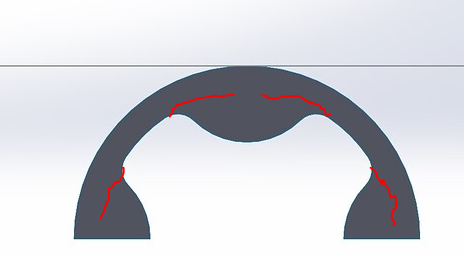
In the flat version, you will have distance at the level of the cuts. The idea is that the parts with a constant thickness wind harmoniously over the thick parts (which would not be deformed)
